The following is a list of the oldest buildings and structures in Hong Kong.
The following is a list of the oldest buildings and structures in Hong Kong.
Although Hong Kong was sparsely populated prior to the arrival of the British, the area has a number of historic structures:
| Building | Year completed | Builder | Source | Location |
|---|---|---|---|---|
| Lei Cheng Uk Han Tomb Museum | 25-220AD | Sham Shui Po District | ||
| Tung Chung Fort | 1174–1189 | Tung Chung | ||
| Tin Hau Temple, Joss House Bay | 1266 | Sai Kung District | ||
| Tsui Sing Lau Pagoda | 15th century | Ping Shan | ||
| Tang Ancestral Hall | 14th century | Ping Shan | ||
| Yu Kiu Ancestral Hall | 16th century | Ping Shan | ||
| Sau Choi Mansion | Ping Shan | |||
| Law Uk Folk Museum | 18th century | Chai Wan | ||
| Tung Lung Fort | 1719–1724 | Sai Kung District | ||
| Fan Lau Fort | 1729 | Lantau | ||
| Entrance Tower of Ma Wat Wai | Fanling | |||
| Kun Lung Gate Tower | 1744 | Fanling | ||
| Sam Tung Uk | 1786 | Tsuen Wan |
Most of the buildings built during this period was by the British and mostly on Hong Kong Island and the Kowloon Peninsula:
| Building | Year completed | Builder | Source | Location |
|---|---|---|---|---|
| Bank of China Building | 1952 | Central | ||
| City Hall, Hong Kong | 1962 | Central | ||
| Edinburgh Place Ferry Pier | 1957 | Central | ||
| Tsim Sha Tsui Ferry Pier | 1957 | Tsim Sha Tsui | ||
| Queen's Pier | 1957 | Ron Phillips and Alan Fitch | Central | |
| Central Government Offices | 1957 | Central |

The Center is the fifth tallest skyscraper in Hong Kong, after International Commerce Centre, Two International Finance Centre, Central Plaza and Bank of China Tower. With a height of 346 m (1,135 ft), it comprises 73 storeys. The Center is one of the few skyscrapers in Hong Kong that is entirely steel-structured with no reinforced concrete core and is one of the tallest steel buildings in world. It is located on 99 Queen's Road Central in the Central, roughly halfway between the MTR Island line's Sheung Wan and Central stations.

Hong Kong Island is an island in the southern part of Hong Kong. The island, known originally and on road signs simply as "Hong Kong", had a population of 1,289,500 and a population density of 16,390 per square kilometre (42,400/sq mi), as of 2023.

Central is the central business district of Hong Kong. It is located in the northeastern corner of the Central and Western District, on the north shore of Hong Kong Island, across Victoria Harbour from Tsim Sha Tsui, the southernmost point of Kowloon Peninsula. The area was the heart of Victoria City, although that name is rarely used today.

Murray House is a Victorian-era building in Stanley, Hong Kong. Built in the present-day business district of Central in 1846 as officers' quarters of the Murray Barracks, the building was moved to the south of Hong Kong Island during the 2000s. This building has become an iconic landmark in Hong Kong. After housing the Hong Kong Maritime Museum, now in Stanley, it is now home to restaurants and shops.
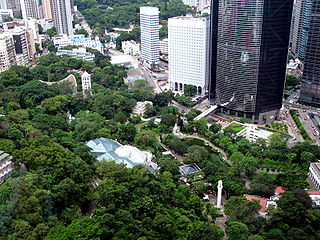
Hong Kong Park is a public park next to Cotton Tree Drive in Central, Hong Kong. Built at a cost of HK$398 million and opened on 23 May 1991, it covers an area of 80,000 square metres (860,000 sq ft) and is an example of modern design and facilities blending with natural landscape.

HSBC Main Building is a headquarters building of The Hongkong and Shanghai Banking Corporation, which is today a wholly owned subsidiary of London-based HSBC Holdings. It is located on the southern side of Statue Square near the location of the old City Hall, Hong Kong. The previous HSBC building was built in 1935 and pulled down to make way for the current building. The address remains as 1 Queen's Road Central.

The Chinese People's Liberation Army Forces Hong Kong Building is the headquarters building of the People's Liberation Army Hong Kong Garrison, located on Lung Wui Road, Admiralty, Hong Kong.

The Hong Kong Visual Arts Centre is located in Hong Kong Park, at 7A Kennedy Road above Central, Hong Kong Island, Hong Kong. It was opened by Leung Ding-Bong, then chairman of the Urban Council, on 28 April 1992.
Declared monuments of Hong Kong are places, structures or buildings legally declared to receive the highest level of protection. In Hong Kong, declaring a monument requires consulting the Antiquities Advisory Board, the approval of the Chief Executive of Hong Kong as well as the publication of the notice on the Hong Kong Government Gazette.

Hong Kong City Hall is a building located at Edinburgh Place, Central, Hong Kong Island, Hong Kong.

The Former French Mission Building is a declared monument located on Government Hill at 1, Battery Path, Central, Hong Kong. It housed the Court of Final Appeal of Hong Kong from 1 July 1997 to 6 September 2015.
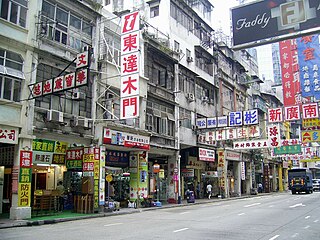
The architecture of Hong Kong features great emphasis on contemporary architecture, especially Modernism, Postmodernism, Functionalism, etc. Due to the lack of available land, few historical buildings remain in the urban areas of Hong Kong. Therefore, Hong Kong has become a centre for modern architecture as older buildings are cleared away to make space for newer, larger buildings. It has more buildings above 35m and more skyscrapers above 150m than any other city. Hong Kong's skyline is often considered to be the best in the world, with the mountains and Victoria Harbour complementing the skyscrapers.
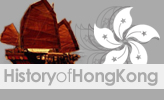
The 1950s in Hong Kong began against the chaotic backdrop of the resumption of British sovereignty after the Japanese occupation of Hong Kong ended in 1945, and the renewal of the Nationalist-Communist Civil War in mainland China. It prompted a large influx of refugees from the mainland, causing a huge population surge: from 1945 to 1951, the population grew from 600,000 to 2.1 million. The government struggled to accommodate these immigrants. Unrest in China also prompted businesses to relocate their assets and capital from Shanghai to Hong Kong. Together with the cheap labour of the immigrants, the seeds of Hong Kong's economic miracle in the second half of the 20th century were sown.

Blackhead Point, also known as Tai Pau Mai indigenously, or by the names Tsim Sha Tsui Point and Signal Hill (訊號山), was a cape before any land reclamation took place in Tsim Sha Tsui, Kowloon, Hong Kong. It currently remains a small hill near the coast.

The Victoria Barracks were a barracks in the Admiralty area of Central on Hong Kong Island, Hong Kong. The barracks were constructed between the 1840s and 1874, and situated within the area bounded by Cotton Tree Drive, Kennedy Road and Queensway. Together with Murray Barracks, Wellington Barracks and Admiralty Dock, the barracks formed a British military zone in Central. The barracks was named for Queen Victoria, monarch at the time of construction.

The Kowloon British School was a school established in Hong Kong for the education of the children of expatriates at the turn of the 20th century.
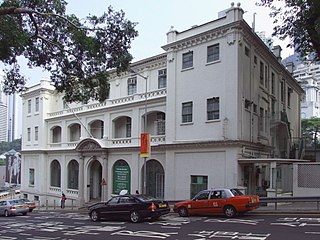
The Helena May main building is a declared monument of Hong Kong home to the Helena May, a private member club located at No. 35 Garden Road, in Central of Hong Kong Island, Hong Kong. The present-day building structure remains largely unchanged from its original building structure from 1914.

The Queensway Government Office Building is a skyscraper located in the Admiralty district of Hong Kong near Admiralty station. The tower rises 56 floors and 199 metres (653 ft) in height. The building was completed in 1985. It was designed by Mr K.M. Tseng of the Architectural Services Department. The Queensway Government Offices, which stands as the 54th-tallest building in Hong Kong, is a Hong Kong government office building. The roof of the Queensway Government Office Building is adorned with a dragon logo, the symbol of Hong Kong; the structure was added in 2002.

Queen's Building was a late 19th-century neoclassical building located in Central, Hong Kong. Named after Queen Victoria, it was situated to the west of Statue Square on Hong Kong Island's waterfront with Victoria Harbour at the time. It was demolished in 1963 and replaced with the Mandarin Oriental, Hong Kong.
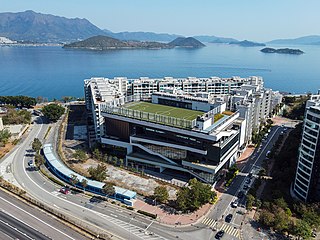
Malvern College Hong Kong is a British international school in Pak Shek Kok, Hong Kong, China. The school is an affiliate of Malvern College in Malvern, Worcestershire, United Kingdom.